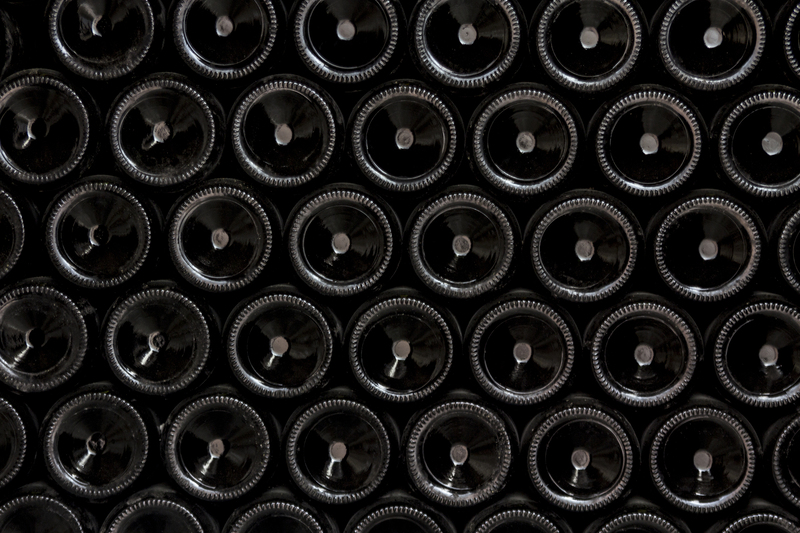Uniting to Diminish Microplastic Pollution: A Global Imperative
Microplastic pollution is an emerging environmental threat with pervasive impacts reaching across our oceans, air, soils, and even the food we consume. Tackling this issue requires a global approach, as plastic waste knows no borders. Uniting to diminish microplastic pollution is essential--not just for safeguarding ecosystems, but also to protect human health and ensure a sustainable future. This comprehensive article explores the sources, effects, and solutions for microplastic contamination, while highlighting the importance of collective action at every level.

Understanding Microplastics: What Are They?
Microplastics are defined as tiny plastic particles less than 5 millimeters in diameter. These particles are grouped into two main types:
- Primary microplastics: Manufactured in small sizes, often used in cosmetic products, cleaning agents, and industrial abrasives.
- Secondary microplastics: Result from the breakdown of larger plastic items like water bottles, bags, and fishing gear due to environmental exposure.
As plastics degrade, ultraviolet (UV) light and mechanical forces fragment them into microplastic particles, which are almost impossible to remove once dispersed in the environment.
Where Are Microplastics Found?
Research reveals that microplastics have infiltrated nearly every corner of our planet. They are found in:
- Rivers, lakes, and oceanic waters
- Beach sands and deep-sea sediments
- Drinking water (tap and bottled)
- Soil and agricultural lands
- Atmosphere, transported via wind and rain
- Wildlife and seafood, entering the human food chain
Microplastic pollution is truly a global challenge, with its presence confirmed from the Arctic to the depths of the Mariana Trench.
How Microplastics Enter the Environment
There are numerous pathways through which microplastics reach diverse ecosystems. Key contributors include:
- Wastewater and Sewage: Microbeads from personal care products and microfibers from washing synthetic clothes can escape water treatment plants.
- Plastic Waste Mismanagement: Littering, illegal dumping, and inefficient recycling systems lead to plastic debris being broken down outdoors.
- Industrial and Urban Runoff: Imperfect handling of raw plastic materials and urban stormwater carries particles into rivers and seas.
- Atmospheric Transport: Tiny plastic fibers and fragments become airborne through wind, dust, and even activities such as tire wear on roads.
Because microplastics are so small, they can evade most filtration systems, making their prevention more practical than their removal.
The Lifecycle of Microplastics
Many everyday items can contribute to microplastic contamination as they degrade over time. Synthetic clothing, single-use plastics, tires, and paints all release harmful fragments through wear and tear, washing, or exposure to the elements.
Understanding these cycles is crucial for developing effective strategies to combat this form of pollution.
The Impact of Microplastic Pollution on the Environment and Health
Environmental Consequences
The pervasive presence of microplastics poses grave threats to aquatic and terrestrial life:
- Marine organisms can mistake microplastic particles for food, leading to malnutrition, digestive blockage, and chemical exposure.
- Microplastics can transport toxic pollutants and invasive species to new locations, disrupting ecosystems.
- Soil ecosystems are affected, as plastic fragments can alter soil texture, microbial activity, and nutrient cycling.
Health Hazards to Humans
Research on microplastics in human health is ongoing, but studies already indicate that:
- Microplastics are ingested and inhaled by people every day through food, water, and air.
- Chemicals associated with plastics, such as phthalates and bisphenol A (BPA), are linked to endocrine disruption, developmental disorders, and even cancer.
- There is evidence that microplastics can act as carriers for bacteria and other pathogens.
The need to unite and reduce microplastic pollution is not only an environmental matter, but a public health priority.
Global Efforts: Uniting Against Microplastic Pollution
The fight against plastic pollution requires coordinated action, innovative policies, and international cooperation. Many organizations and governments are stepping up to the challenge:
International Initiatives
- United Nations Environment Programme (UNEP): Leading assessments and calling for a global plastics treaty to address plastic and microplastic pollution at its source.
- European Union: Banning single-use plastics, funding research on microplastic impacts, and developing circular economy strategies.
- Global Plastic Action Partnership: Uniting governments, businesses, and civil society to promote evidence-based solutions.
Country-Level Policies
- Microbead bans in cosmetics and personal care products have been enacted in the United States, Canada, UK, and many others.
- National plastic waste reduction targets and enhanced recycling mandates are becoming widespread.
- Public education campaigns and research grants promote awareness and innovation.
Corporate and NGO Participation
- Companies are investing in biodegradable plastics, closed-loop manufacturing, and plastic offset programs.
- Environmental NGOs launch beach cleanups, citizen science projects, and advocate for stricter regulations.
The collaborative model--combining government regulation, corporate responsibility, and civic participation--is essential for any real progress in diminishing microplastic pollution.
What Individuals Can Do: Taking Action on Microplastics
While large-scale changes are vital, individual actions play a crucial role in the mission to reduce microplastic contamination. Here are practical steps anyone can take:
- Choose Natural Fabrics: Opt for cotton, linen, and wool instead of polyester or nylon to reduce microfiber shed when washing clothes.
- Limit Single-Use Plastics: Use reusable bags, bottles, and containers to cut down plastic waste.
- Participate in Cleanups: Join local initiatives to remove plastic waste from beaches, rivers, and neighborhoods.
- Use Microfiber Filters: Install washing machine filters or laundry bags designed to capture microfibers.
- Support Legislation: Advocate for bans on harmful plastics and for stricter waste management policies.
- Be a Conscious Consumer: Select products from companies actively working to limit plastic use and waste.
Education and Advocacy: Spreading Awareness
Raising public understanding is vital to inspire lasting change. Educational initiatives in schools, communities, and online can empower more people to combat microplastic pollution and demand better solutions from industry and government.
Emerging Solutions for Microplastic Contamination
While prevention is the best cure, scientists and innovators are working hard to find new methods to manage existing microplastics. Some promising approaches include:
- Advanced Filtration Systems: New technologies for wastewater treatment that target micro- and nanoplastics.
- Biodegradable Plastics: Plastics derived from plants or fungi that quickly decompose and minimize environmental impact.
- Plastic-Eating Enzymes and Organisms: Certain bacteria and engineered enzymes show promise in breaking down stubborn plastic polymers.
- Smart Design: Creating products with end-of-life in mind--easy to recycle, reuse, or compost.
Collaboration between governments, researchers, and the private sector is accelerating the development and adoption of these scientific breakthroughs.
Future Prospects: Turning the Tide
Uniting to reduce microplastic pollution is not an option, but an urgent necessity. New innovations, coupled with determined global cooperation, offer hope for cleaner oceans and healthier communities. Achieving these goals, however, will demand ongoing vigilance, adaptability, and a shared commitment to a sustainable planet.

Frequently Asked Questions about Microplastic Pollution
-
How harmful are microplastics to humans?
Emerging evidence suggests microplastics can accumulate in the human gut and potentially cause inflammation or act as vectors for toxins. The long-term health effects are still under investigation, but the precautionary principle suggests minimizing exposure. -
Can we completely remove microplastics from the environment?
Unfortunately, due to their size and widespread distribution, fully eliminating microplastics is extremely difficult. The most effective approach is to prevent further pollution and develop technologies to capture and degrade existing microplastics where possible. -
Which products are the biggest contributors to microplastic pollution?
The largest sources include synthetic textiles, car tires, single-use plastics, paints, and microbeads in cosmetics and cleaning agents. -
Is bottled water safer than tap water in terms of microplastics?
Studies have found that both tap and bottled water can contain microplastic particles. The best strategy is to support efforts to reduce plastic use and improve both water treatment and packaging standards.
Conclusion: A Shared Responsibility for a Cleaner Future
In tackling microplastic pollution, every action counts--whether it's adopting sustainable habits, supporting innovative research, or advocating for stronger policies. Our environment, and the health of generations to come, depends on our willingness to act together.
The challenge of microplastics is immense, but by uniting to diminish microplastic pollution, we can build resilient ecosystems and healthier communities, ensuring a brighter future for all.
Let us commit today: through collaboration, education, and innovation, we will turn the tide on plastic pollution, one step at a time.